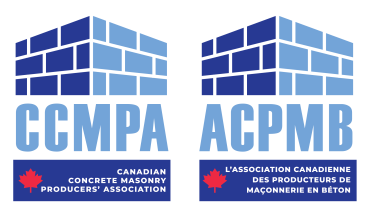
Are you in the know?
I'm Andrea McChesney, the Executive Director of the CCMPA, and we want to ensure you and your team have all the access to the latest and greatest in CCMPA activities and industry buzz.
Sincerely, Andrea & your CCMPA team.

OTTAWA, March 21, 2016 – A new study of the property insurance costs for wood frame and concrete mid-rise residential buildings conducted by GLOBE Advisors and released today by the Concrete Council of Canada reveals a substantial gap in the risks and insurance rates between the two building systems.
The data for the study “Insurance Costs for Mid-Rise Wood Frame and Concrete Residential Buildings” was drawn from relevant published literature and consultations with brokers, underwriters and property managers. Interviews with three underwriters and data from the Canadian Wood Council (CWC) show that builders’ risk insurance rates per $100 monthly for comparable wood and concrete buildings are on average $0.008 for concrete and $0.053 for wood. When excluding the rate provided by CWC for wood frame insurance, which was significantly lower than the rates provided by the underwriters, the average rate for wood buildings rises to $0.06, a factor of 7.5 times greater than that for concrete buildings.
The study identified four main reasons for the higher rates:
“One of the key points about insurance rate setting emerging from this research was the importance of moisture control, both during construction and over the life of an insured asset. Indeed, the importance of moisture management could emerge as one of the most important takeaway conclusions of this research.” said Frank Came, Senior Advisor, GLOBE Advisors.
GLOBE Advisors conducted the study on behalf of the Concrete Council of Canada.
“We commissioned this study because we believe it is important for everyone to be aware of the implications of mid-rise wood frame construction in terms of public safety, municipal budgets, homeowner risk exposure and contractors liabilities”, said Chris Conway, Chair, Concrete Council of Canada. “The GLOBE Advisors study demonstrates that there is a need for a definitive comparative analysis of total life-cycle costs of wood frame and concrete structures, taking into consideration not only changing technologies and related costs of building products, but also the longer term costs of building operation, maintenance, and decommissioning. Given the high costs already associated with constructing and operating a mid-rise residential structures, a concerted effort must be made to build better awareness of the factors that influence insurance rates.”
To download the Executive Summary and the Full Study please click here.
GLOBE Advisors, a subsidiary of the Vancouver-based not-for-profit GLOBE Foundation, was established in response to increasing demand to provide consulting services on a project basis. GLOBE Advisors has extended networks and extensive experience in the areas of international project management, partnership development, consulting, and market research.
The Concrete Council of Canada is an organization of national and provincial associations bringing together representatives from the full spectrum of cement and concrete manufacturers across Canada. The Council’s mission is to advance the industry’s leadership in sustainable construction and promote the social, environmental and economic value of concrete, concrete products and concrete systems in Canada.